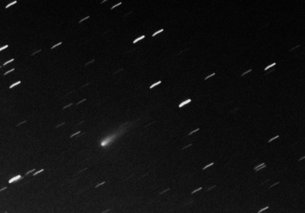.
 .
.
 .
.‘This is something to keep an eye on. The press has been playing it down which always makes one sit up and pay attention. Notice we never really get detailed analysis from any of these mega observatory installations. Maybe a Hubble pic here and there but always superficial information, as if we’re not supposed to know about the full realities of what’s going on out there. That certainly fits their strangulating, elitist, eons old “need to know basis” meme.
That ISON will be its closest to the earth near the winter solstice is significant in itself, never mind the sun being in a magnetic shut down in this general time due to its magnetic pole shift now under way. Perhaps even more importantly is the fact that we could easily pass through its debris field. That in itself is clearly something that is worth paying attention to.’ . Researchers have discovered that major pandemics have taken place on the planet during solar magnetic shut downs since ions are not deflected from earth by the sun’s magnetic field, and they’ve proven they arrive with alien microbes from outer space.
Our planet’s magnetic field is also at a low ebb, compounding our vulnerability. I’ll try to keep this subject updated. Space weather and conditions are important to keep track of, just as we track geopolitical change, consciousness uprisings, and the movements of the heavens in astrological science. Keep on integrating all this information, it’s ultimately empowering. And don’t let our current circumstances get you down. We are the force we’ve been waiting for. Be enthused! The god or “spirit in us” awaits activation and realization.
Now TURN – IT – ON!! Love, Zen
http://www.zengardner.com/
Preparing for Comet ISON
Originating from the Oort Cloud, a repository of icy bodies billions of kilometres from the Sun, ISON is on a path that will bring it within grazing distance – 1.2 million kilometres – above the Sun’s visible surface on 28 November. The NASA/ESA Hubble Space Telescope took detailed images earlier this year, such as the main image presented here from 30 April. In this composition, the comet is set against a separately imaged background of stars and galaxies. For some time the view of the comet from Earth was temporarily blocked by the Sun, but it was spotted again in August, by amateur astronomer Bruce Gary.
Astronomers around the world are now eagerly watching as the comet draws closer, its coma – the tenuous atmosphere that surrounds the comet’s rock–ice nucleus – becoming more pronounced as its surface ices are heated by the Sun and transformed into gas. Dusty debris is suspended in the coma and swept into a tail, which will also become more prominent as the comet approaches the Sun.
Astronomer Pete Lawrence from the UK imaged Comet ISON (shown right) on 15 September, as it passed through the constellation of Cancer en route to Leo. Pete used a 10 cm-diameter telescope with a CCD camera attached; the exposures totalled 40 minutes, with individual images stacked together to produce the final result. ESA and NASA space missions are also preparing to observe the comet. Tonight, ESA’s Mars Express starts its observation campaign, taking photos and analysing the composition of the comet’s coma over the next two weeks.
The comet will be at its closest to Mars on 1 October – at a distance of 10.5 million kilometres – six times closer than it will approach Earth. The ESA/NASA SOHO mission will view the comet as it swings around the Sun at the end of November, and astronomers will be waiting to see if the comet survives its fiery encounter. The comet will be brightest in our skies just before and in the week after its encounter with the Sun, assuming it survives, but will likely have faded by the time it makes its closest approach to Earth on 26 December. It will pass Earth with no threat of impact.
MORE HERE .


No comments:
Post a Comment